Metrics such as visitors, time spent per session, and conversions have been used for years to steer content creation and marketing campaigns toward further success.
The problem is that these traditional analytics only provide half of the story—they don’t explain exactly why the content is performing well, or how a specific type of content may influence the journey of marketing qualified leads (MQLs).
That’s where content scoring comes into play. Creating a scoring system for your marketing content allows you to evaluate quality, discover trends across MQLs, and streamline content creation to meet your goals.
Here's what we'll cover in this piece:
- What Is Content Scoring & Why Is It Important?
- 3 Different Ways to Score Content
- What Content Score You Should Aim For?
- Best Practices for Content Scoring
What Is Content Scoring & Why Is It Important?
Content scoring is a valuable technique used in SEO to assess the quality and effectiveness of website content. It involves assigning numerical scores to content based on criteria such as relevance, readability, and keyword use.
For SEO managers and data analysts, these scores provide insights into how well their content will perform and help pinpoint areas for improvement.
This data-driven approach also helps optimize content for search engines and ensures that it meets the needs of the target audience. The result? Better rankings, increased engagement, and a surge in organic traffic.
3 Different Ways to Score Content
Every marketing team handles content scoring differently depending on their unique objectives.
When building your comprehensive scoring system, ensure it incorporates important sales data and competitor analysis to fit your end goal.
Below, we will address the three main ways to score content.
Scoring Content Type & Position in Sales Funnel
The journey of a prospective customer becoming an MQL involves multiple interactions or “touchpoints” with your content, whether it’s reading a blog post, watching a video, or listening to a podcast.
Each touchpoint brings the prospect closer to making a conversion. Therefore, each type of content can be given a score to reflect its value in the journey. A typical score sheet may look like this:
|
Touchpoint |
Content Type |
Score |
|
1 |
Blog Post |
.30 |
|
2 |
Podcast |
.20 |
|
3 |
Infographic |
.20 |
|
4 |
Webinar |
.30 |
In this type of scoring model, it’s become standard practice to place higher value on a prospect's first and last touchpoints. The reason being that the first piece of content caused them to return and the final piece caused them to become a lead.
The score of one funnel doesn’t create a clear picture. But, as data grows, you can gain actionable insights to shift your strategies moving forward.
Determining an overall score for the content across a buyer’s journey helps you understand which content is more relevant for a first-time visitor versus a qualified prospect. In addition, content scores help identify which pieces of marketing content are not contributing toward conversions.
Scoring Content for Readability
With so many aspects of content optimization to consider, one of the easiest to overlook is readability.
Generally, the clearer and more readable the content is, the more time viewers will spend on a page and the better it will perform in the SERPs.
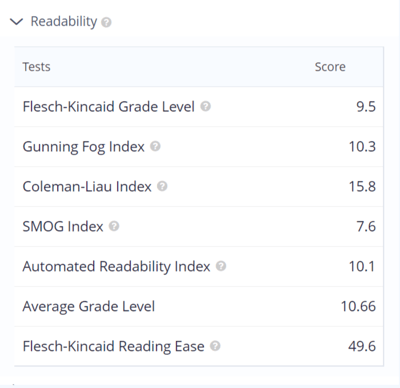
Calculating scores for readability on a given page may include assigning values to:
- Sentence structure
- Vocabulary choices
- Speaking time
- Use of active voice
- Spelling and grammar
Developing a scoring system for readability reveals which pages are ready to publish and which ones have issues that you need to address. These scores also help locate gaps in user accessibility.
Scoring Content for SEO
When it comes to optimizing content for search engines and SERP visibility, many marketers create their own guidelines.
Often, marketers base these standards on the best practices of authoritative voices in the industry combined with data they’ve collected over time.
At the end of the day, we don’t know exactly what Google wants from an SEO perspective.
However, we do know what works when it comes to ranking higher in search results.
Through competitor analysis, you can create an SEO content scoring system that reveals the ranking potential of each page when weighed against what’s currently ranking in the SERPs.
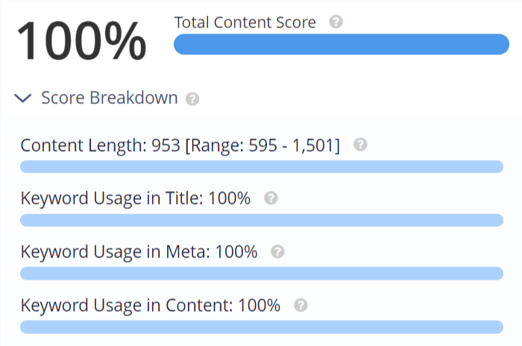
Such a model would assign value to aspects such as content length, relevancy, keyword usage across the page, meta description, and title. The sum total of these factors serves as your benchmark standard for publication.
But, for enterprise brands looking to simplify and scale their content scoring process, seoClarity offers Content Fusion, an AI SEO content writing tool.
After generating insights on recommended keywords and suggested word count for your topic, Content Fusion provides an overall score for each piece of content that you create.
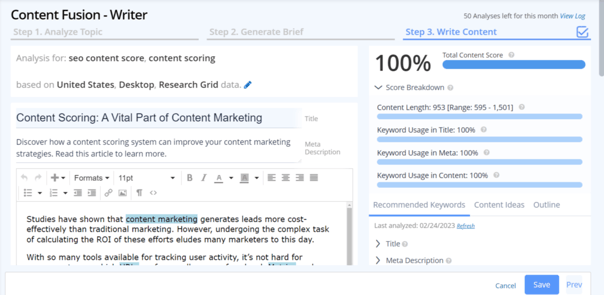
As you build relevance in your content based on the AI-driven insights that Content Fusion provides, the score updates in real-time.
Ultimately, Content Fusion takes the guesswork out of content scoring so that content teams can easily confirm content quality and relevance to a target audience before it’s published on a site.
What Content Score Should You Aim For?
When using a content scoring system like Content Fusion, you may wonder what score you should aim for.
While there isn't one universal answer that will apply to every piece of content, we suggest aiming for a score of around 80 or above.
A content score below 70 generally indicates that the piece doesn't include the components needed to outperform competing content.
That being said, it's important not to get too focused on hitting a perfect score. While a content score indicates a piece's relevance relative to the other existing content on the web, a high score does not guarantee that a piece will rank well.
If you achieve a high content score and your page still doesn't rank well, there are several other factors that could contribute to a page's performance. This helpful blog post includes 14 different optimization ideas to increase search visibility such as improving page speed, building authority with topic clusters, and creating a healthy page structure.
Ultimately, content scoring should guide and inform your content creation efforts, rather than act as the sole determiner of content quality.
Best Practices for Content Scoring
To ensure accurate and actionable data, there are a few best practices to keep in mind.
- Define clear goals and metrics for content scoring, aligning them with your overall business objectives.
- Establish a scoring system that takes into account factors like relevance, engagement, and user behavior.
- Regularly review and update your scoring criteria to adapt to changing search algorithms and user preferences.
- Leverage data analysis tools to track and measure the impact of your content on key performance indicators.
Like any other marketing technique, content scoring is an ongoing process that requires review to ensure your system remains effective and sustainable.
Conclusion
No matter how you choose to integrate content scoring into your marketing strategy, it’s important to understand value of these insights for your sales team.
Over time, content scoring will help you understand which steps in the sales funnel are most valuable so that you can strengthen your marketing campaigns in the future!
To improve the performance of their content, marketing teams should consider adopting content scoring as a method to measure content quality, understand their consumers, and increase their ROI.
Simplify and scale this process by using seoClarity's Content Fusion, which offers content scoring, generates detailed content briefs within seconds, analyzes content globally, and leverages content insights via an API.
<<Editor's Note: This post was originally published in March 2023 and has since been updated.>>





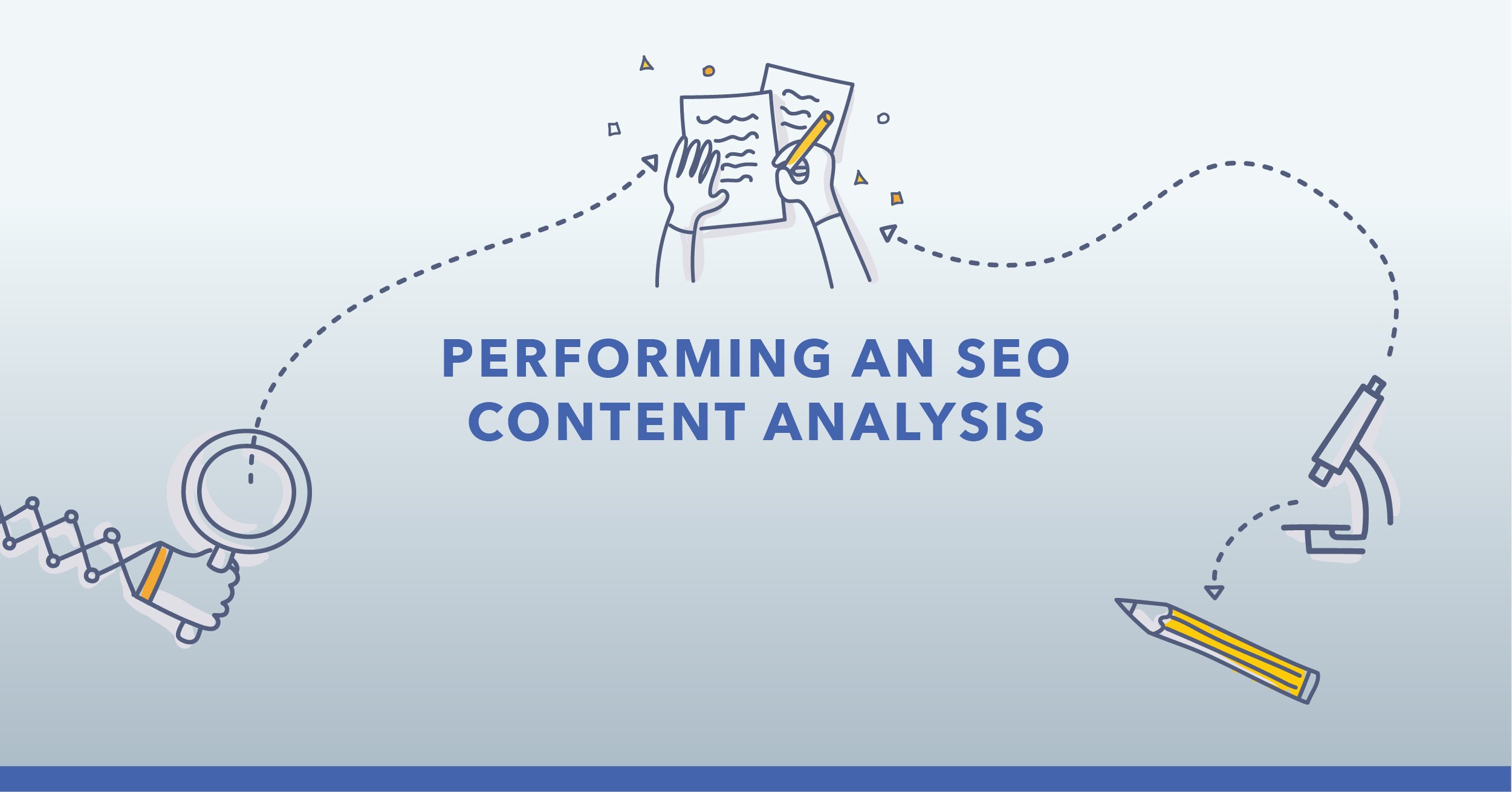
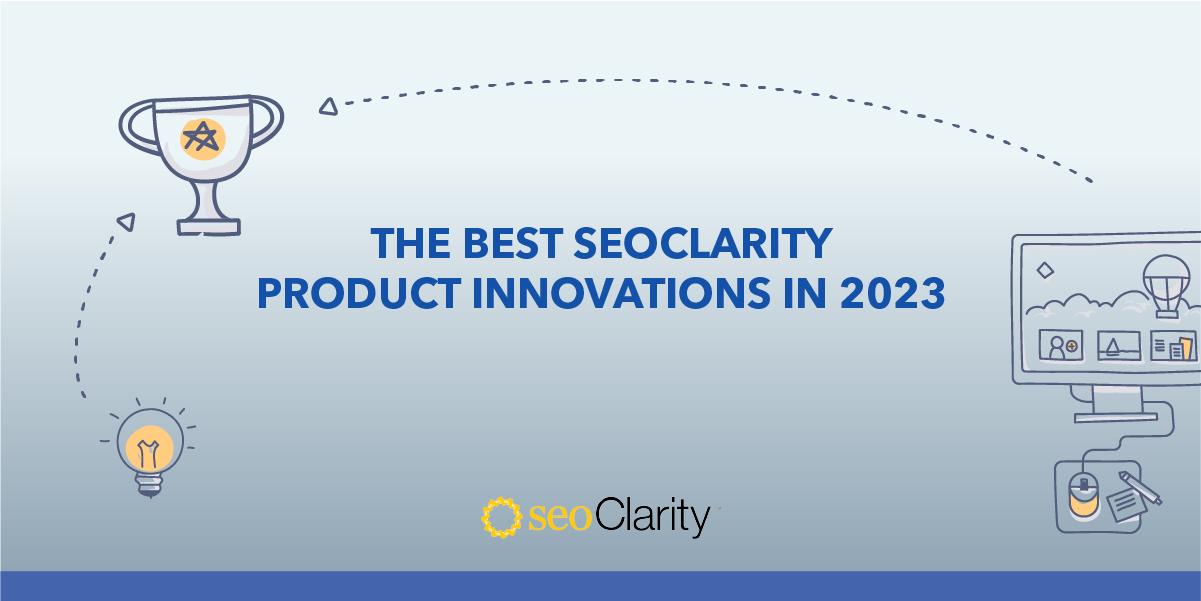

Comments
Currently, there are no comments. Be the first to post one!